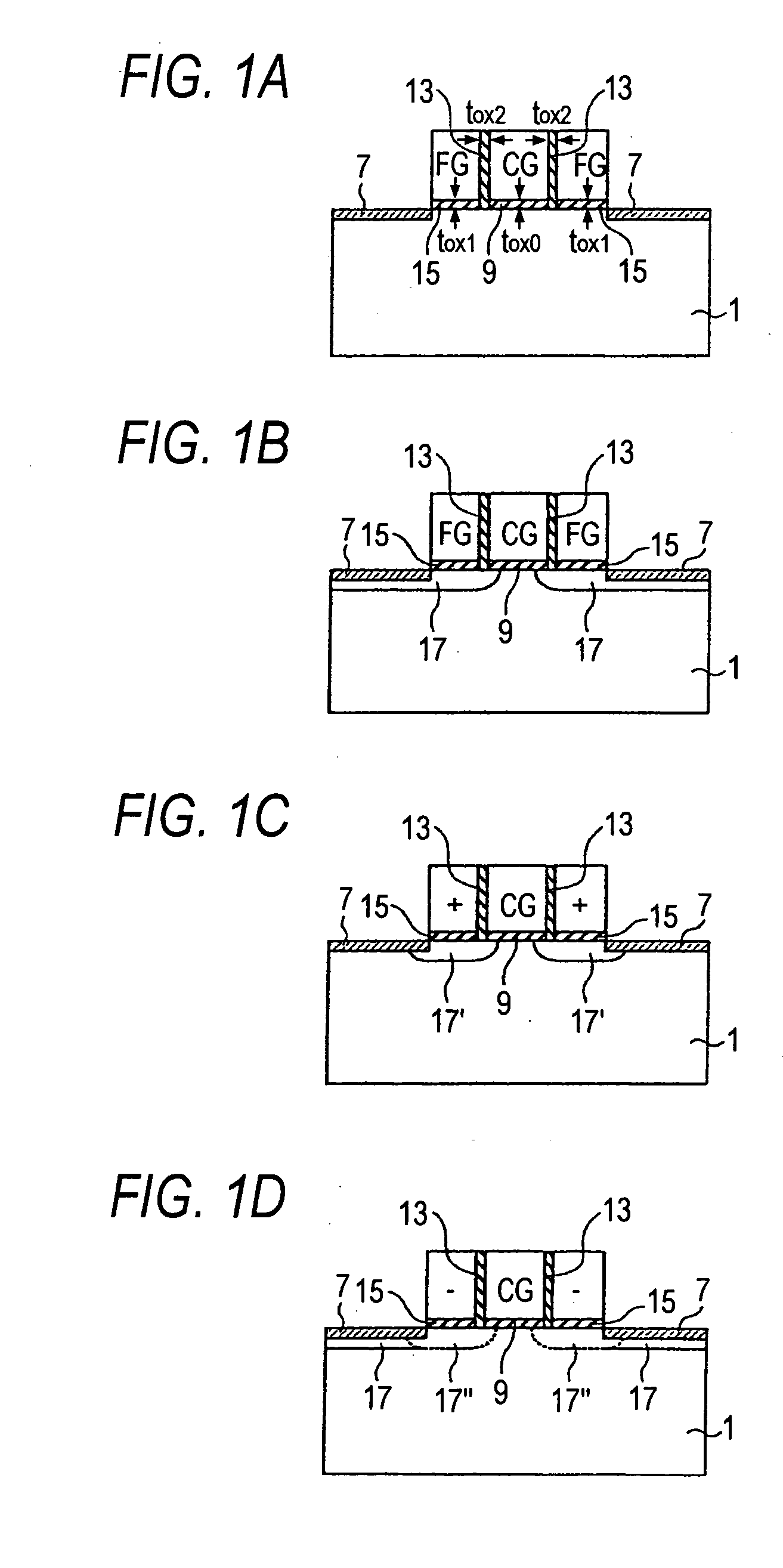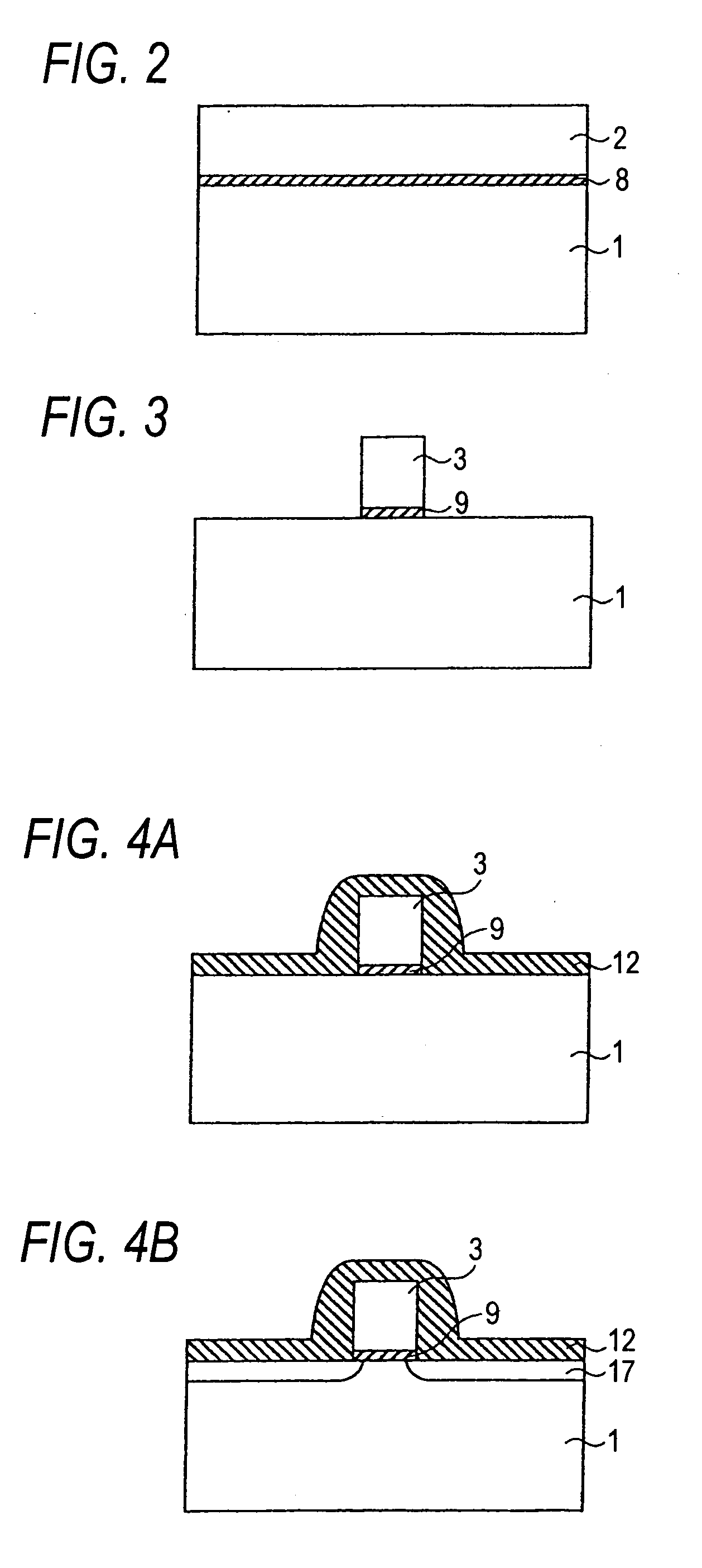Semiconductor memory device
a semiconductor and memory device technology, applied in the direction of semiconductor devices, electrical devices, transistors, etc., can solve the problems of low on/off characteristics, complicated circuits, complex devices, etc., and achieve excellent on/off characteristics and simple structur
- Summary
- Abstract
- Description
- Claims
- Application Information
AI Technical Summary
Benefits of technology
Problems solved by technology
Method used
Image
Examples
first embodiment
[0040] A storage element in a first embodiment will be described with reference to FIGS. 1A to 1D. A storage element is a minimum unit which independently performs a specific function in a storage device, and a storage device is a device which is formed by integrating such storage elements.
[0041]FIGS. 1A to 1D are sectional diagrams illustrating the storage element in the first embodiment, taken in the gate length direction. For the sake of convenience, a state where the amount of ON-current of the storage element is small is set as 1-state, and that where the amount of ON-current is large is set as 0-state. A case where a charge storage layer is formed by a floating gate made of a conductor which is surrounded by an insulating layer will be described.
[0042] First, a storage element in which only fixed information at factory shipment is stored will be described. FIG. 1A shows the storage element in which the fixed information is in 1-state (hereinafter, referred to as fixed inform...
second embodiment
[0110] A storage element in a second embodiment will be described with reference to FIGS. 19A to 19D. For the sake of simplicity, only portions which are different from those of the first embodiment will be described.
[0111]FIGS. 19A to 19D are sectional diagrams illustrating the storage element in the second embodiment, taken in the gate length direction. FIG. 19A shows the storage element of fixed information (1), FIG. 19B shows the storage element of fixed information (0), FIG. 19C shows the storage element of fixed information (1) and semi-fixed information (0), and FIG. 19D shows the storage element of fixed information (0) and semi-fixed information (1).
[0112] As shown in FIGS. 19A to 19D, in the storage element in the second embodiment, the semiconductor substrate 1 comprises an embedded insulating layer 25.
[0113] In the second embodiment, the region of the semiconductor substrate 1 which is directly under the pseudo impurity diffusion layers 17′ and the depleted impurity d...
third embodiment
[0122] A storage element in a third embodiment will be described with reference to FIGS. 22A to 22D. For the sake of simplicity, only portions which are different from those of the first embodiment will be described.
[0123]FIGS. 22A to 22D are sectional diagrams illustrating the storage element in the third embodiment, taken in the gate length direction. FIG. 22A shows the storage element of fixed information (1), FIG. 22B shows the storage element of fixed information (0), FIG. 22C shows the storage element of fixed information (1) and semi-fixed information (0), and FIG. 22D shows the storage element of fixed information (0) and semi-fixed information (1).
[0124] As shown in FIGS. 22A to 22D, the storage element in the third embodiment has a so-called double-gate structure. The gate insulating film 9 is configured by a first gate insulating film 9a on the semiconductor substrate 1, and a second gate insulating film 9b under the semiconductor substrate 1. The gate electrode (CG) ha...
PUM
 Login to View More
Login to View More Abstract
Description
Claims
Application Information
 Login to View More
Login to View More - R&D
- Intellectual Property
- Life Sciences
- Materials
- Tech Scout
- Unparalleled Data Quality
- Higher Quality Content
- 60% Fewer Hallucinations
Browse by: Latest US Patents, China's latest patents, Technical Efficacy Thesaurus, Application Domain, Technology Topic, Popular Technical Reports.
© 2025 PatSnap. All rights reserved.Legal|Privacy policy|Modern Slavery Act Transparency Statement|Sitemap|About US| Contact US: help@patsnap.com



